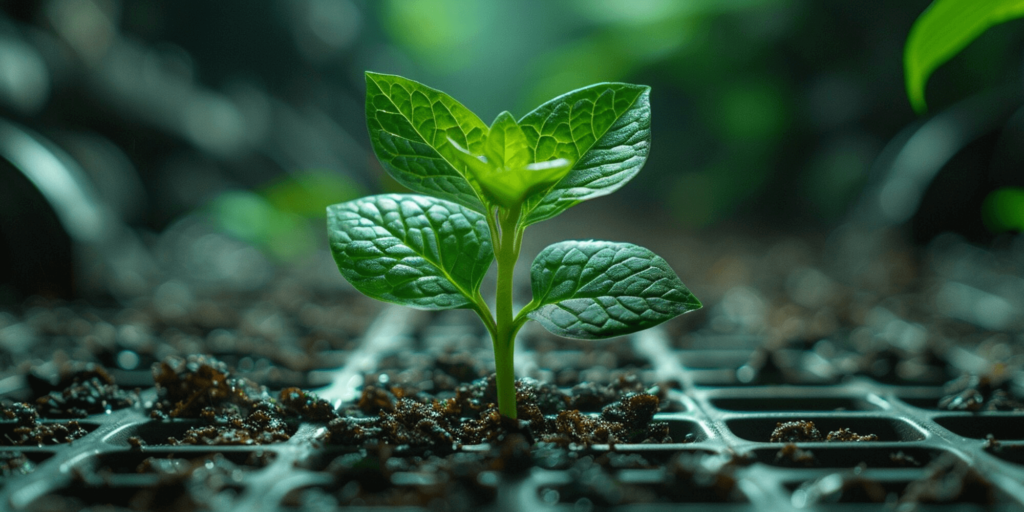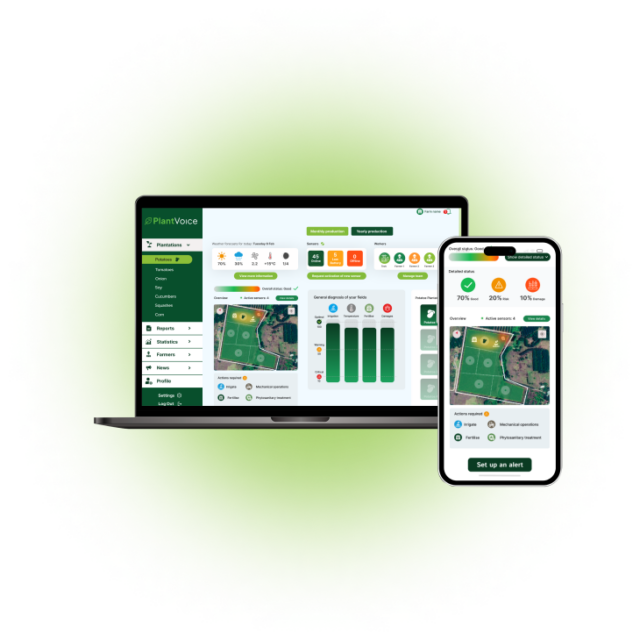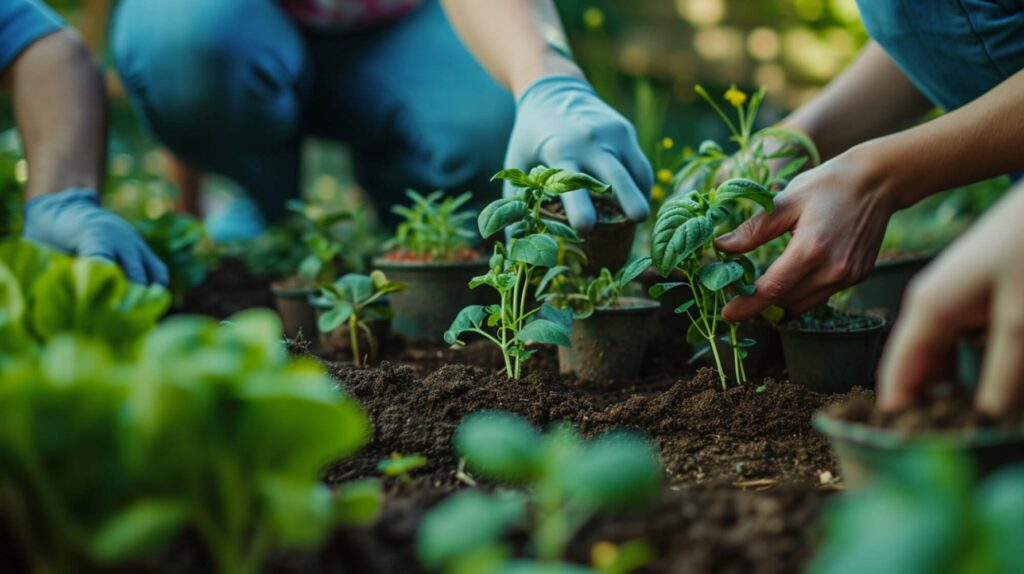The use of sensing and analytical technologies enables PlantVoice to gather detailed information about the physiological needs of plants. Through smart sensors and algorithms, the app analyzes key parameters such as Analyze sap salinity and flow, temperature, nutrient levels, and weather conditions. This data allows farmers to make targeted decisions, reducing resource waste and optimizing irrigation and fertilization.
Precision agriculture app: monitor the health of your fruit plants in real time

Healthier and more productive crops
Plants communicate through biochemical signals and changes in their vital parameters. PlantVoice interprets this information, signaling any water stress, nutritional deficiencies or phytopathological threats in real time. With these notifications, timely action can be taken to preserve plant health and prevent production declines.
Reliable support for orchards, vineyards and specialty crops
The app is particularly useful for managing high-value crops, such as orchards and vineyards, where constant monitoring of environmental conditions is crucial to achieving quality crops. With forecasting tools based on agronomic models, PlantVoice helps farmers plan treatments, reduce chemical use, and improve farm profitability.
Always accessible data and integration with agricultural machinery
PlantVoice’s intuitive interface allows data to be accessed anytime from a smartphone or tablet. The app integrates with precision farming systems already in use, such as weather stations, drones, and equipment for targeted distribution of fertilizers and pesticides. In this way, the farmer has a complete digital ecosystem for crop management.
Sustainable and competitive agriculture
Adopting an intelligent monitoring system like PlantVoice means optimizing agricultural processes, improving crop yields and reducing environmental impact. The ability to predict the needs of plants and intervene only when necessary makes it possible to reduce water consumption, limit fertilizer waste, and promote more sustainable agricultural practices.

Precision Agriculture: a new paradigm for sustainable crop management
Precision agriculture (in English Precision Agriculture or Precision Farming) represents an innovative approach to farming that aims to optimize resource use and increase productivity while reducing negative impacts on the environment. This model is based on capturing timely information about soils, plants and weather conditions and then translating it into targeted and differentiated interventions. In today’s context of population growth, climate change and the need to make the primary sector more sustainable, precision agriculture stands as one of the most effective solutions.
Basic principles of precision agriculture
-
Data Collection
The basis of precision agriculture is the collection of accurate and up-to-date data. These can come from a variety of sources:- Satellite: satellite images make it possible to analyze the vegetative state of crops and obtain indices such as NDVI(Normalized Difference Vegetation Index).
- Drones: the use of drones equipped with multispectral or thermal sensors enables more detailed analysis of growing areas, identifying areas of water stress, nutritional deficiencies or pest attacks.
- Field sensors: sensors for moisture, temperature, and other parameters (e.g., electrical sensors for soil conductivity) are essential for real-time monitoring of the pedo-climatic environment.
- Agricultural machines equipped with sensors: modern tractors and combines can record crop data such as yield per individual field portion, crop density, moisture and other variables.
-
Analyzing the information
Once the data have been obtained, they must be processed to provide useful, personalized guidance. GIS (Geographic Information Systems) software and specific analysis platforms make it possible to create prescription maps, highlighting variability within the same plot. This makes it possible to know, for example, which areas need more fertilization, which require more irrigation or specific phytosanitary treatments. -
Targeted application of inputs
The operational aspect of precision farming is manifested in the use of machinery equipped with variable rate technology (VRT), which can modulate quantities of seed, fertilizer, water or plant protection products according to the actual needs of the soil. This results in:- Waste reduction: delivering inputs only where and when they are needed decreases consumption and costs.
- Increased effectiveness: targeted intervention increases the efficiency of input use, ensuring plants get what they need at the right time.
- Increased sustainability: reducing the resources used and reducing the risk of pollution improves the overall environmental impact.
Agronomic, economic and environmental benefits
-
High productivity
Through the rational use of inputs, crops show potentially higher yields. Optimal nutrition and irrigation, combined with timely phytosanitary management, allow plants to reach their full productive potential. -
Cost optimization
The initial investment in acquiring precision instruments (sensors, drones, VRT machines, data processing software) may seem high, but it is offset by:- Reducing the amount of fertilizer and plant protection products used.
- Less water waste and energy saving.
- Better management of work time by automating field operations.
In the medium and long term, this translates into a significant economic return.
-
Sustainability and environmental protection
Precision agriculture improves the management of natural resources, limiting the ecological footprint of agricultural activities:- Targeted use of pesticides reduces soil and groundwater contamination.
- Proper fertigation minimizes the risk of nutrient leaching.
- The “precision” approach integrates with conservation agriculture practices, promoting conservation of soil fertility and biodiversity.
Key technologies and emerging innovations
-
Automatically Guided Machines
Tractors and combines equipped with GPS guidance systems enable more precise work, reducing overlaps and unnecessary passes. This contributes to lower fuel consumption, less soil compaction and reduced working time. -
Internet of Things (IoT)
The IoT is revolutionizing the way information is collected and managed:- Networked sensors sending data to cloud platforms for real-time analysis.
- Automatic alert systems for water stress, adverse weather conditions or pathogen outbreaks.
- Ability to integrate data from different sources (drones, satellites, weather stations) into a single decision support system.
-
Big Data and Artificial Intelligence (AI)
The vast amount of data collected would be of no use without appropriate processing methods. Data mining, machine learning and AI techniques make it possible to:- Predicting crop performance in relation to climatic and management variables.
- Recognizing diseases and parasites through image recognition algorithms.
- Develop optimized cropping plans based on market forecasts, water availability, crop rotations and farm economic goals.
-
Robotics applied to the countryside
Agricultural robots are already finding use in some settings for selective harvesting of fruits and vegetables, distribution of pesticides and precision planting. Such devices, which are connected and autonomous, enable them to operate even in difficult conditions and with extreme accuracy.
Technological innovations and PlantVoice
-
Technology access and training
Despite the benefits, upfront costs can be a barrier, especially for small and medium-sized companies. It will be critical:- Encourage access to funds and incentives to purchase equipment.
- Enhance technical and scientific training of farmers through courses, workshops and demonstration projects.
- Stimulate networking among companies, research centers and technology startups to share expertise and reduce barriers to entry.
-
Data Standardization and Interoperability
The lack of shared standards among different analysis devices and software can limit system efficiency. Work needs to be done on creating open data formats that can talk to each other and facilitate integration on common platforms. -
Sustainability and ethical responsibility
While precision agriculture improves environmental sustainability, the social impact should not be overlooked:- Automation and robotics can change labor needs and skills requirements.
- The massive use of sensitive data (land ownership, yield, crop choices) raises issues of privacy and cybersecurity.
- It is essential to promote a model that takes into account the welfare of workers and the vitality of rural communities.
-
Climate Change Adaptation
Precision agriculture can help make agricultural systems more resilient in the face of rising temperatures, variability in rainfall, and increased extreme events:- Continuous monitoring of weather and soil conditions to react quickly to changes.
- Forecasts supported by artificial intelligence algorithms that anticipate the effects of heat waves or late frosts.
- Development of synergistic agronomic techniques (e.g., smart crop rotations, precision irrigation with purified wastewater).

